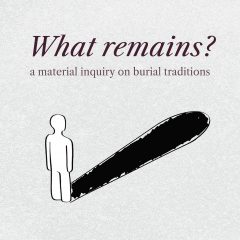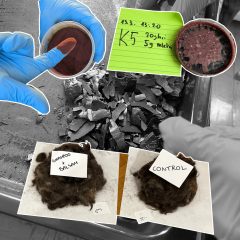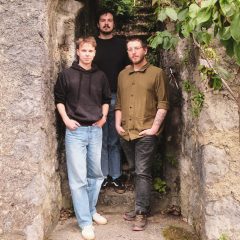Postgraduate Industrial Design Students Present Their Project in New York
From 10 to 12 June 2025, New York hosted three outstanding industrial designers from the University of Ljubljana. Jaka Kordiš, Matic Lesjak, and Črt Štrubelj, postgraduate students of Industrial Design at the Academy of Fine Arts and Design, University of Ljubljana (UL ALUO), represented Slovenia at the international Biodesign Challenge Summit 2025—a competition and exhibition held at Parsons School of Design and the Museum of Modern Art (MoMA). They presented their project “What remains?”.
The Biodesign Challenge (BDC) is an international, interdisciplinary educational program that encourages students to create projects at the intersection of art, design, and biotechnology. Each year, it culminates in a summit in New York, where selected teams pitch their concepts to more than 40 jurors from the global design industry, academia, and the arts.
This academic year, UL ALUO participated in the program with the mentorship of Prof. mag. Barbara Prinčič, Assoc. Prof. Dr. Barbara Predan, Prof. Jure Miklavc, Asst. Tamara Lašič Jurković, and Asst. Tim Prezelj (https://www.biodesignchallenge.org/university-of-ljubljana-2025).
The students developed three excellent projects, and one of them—”What remains?”—was selected to compete at the summit. The authors were thus given the opportunity to present their work alongside teams from 45 institutions worldwide, including prestigious schools such as Pratt Institute, Stanford University, Parsons School of Design, the Technical University of Denmark, and the Royal Danish Academy.
While the UL ALUO team did not make it into the final top eight, their inclusion in such a highly selective international competition—and the fact that their project, which provocatively challenges conventional perceptions and thinking, attracted significant attention from the international expert community—is an exceptional achievement. Congratulations!
“What remains?” is a speculative design project rooted in material experimentation. It responds to the environmental and emotional implications of how we perceive and manage burial.



Contemporary burial and cremation practices often rely on depleting materials—metals, plastics, exotic woods—that separate the body from natural cycles of decay and renewal. The authors ask: What if, instead of generating waste through existing practices, we allowed the body to return as material?
By transforming blood and hair—two deeply personal and symbolically rich substances—into a biodegradable composite, the team created an urn that gently returns the body to the earth. The material is produced through dehydration, coagulation, and compression processes and decomposes over time. It is not designed to preserve, but to support the body’s return.
The project “What remains?” thus proposes a thoughtful shift: a way of mourning with humility, designing with care, and rethinking what we leave behind when life ends.
Judge Feedback:
ALUO – What Remains?
- “Exceptional work on tackling such a challenging and important topic! Your willingness to engage with subjects that many find uncomfortable demonstrates real courage and thoughtful design leadership. Your presentation handled the sensitive themes of death and grief with remarkable grace and sophistication. I was particularly impressed by how you addressed Western society’s tendency to disconnect from natural processes – this cultural critique shows depth and awareness that elevates your work beyond mere design into meaningful social commentary. The design approach you chose is brilliant, especially how you’ve revived historical processes that had been lost to time. This connection between past practices and contemporary needs creates both authenticity and relevance. Your execution is polished and your narrative flows beautifully throughout the presentation. This project has enormous potential, and I genuinely hope to see you continue developing it and presenting at design festivals. The work deserves that platform and audience. One important consideration as you move forward: be prepared for resistance or discomfort from some audiences who may not be ready to engage with these themes. Part of your ongoing work will involve helping people understand the value and necessity of these conversations. Consider developing strategies for gradually introducing people to your concepts and building comfort with the subject matter. This is truly impactful work that addresses something our society needs to discuss more openly.”
- “I really appreciate how thoughtfully you engaged with this topic. Innovating around death is novel but also sensitive and I think you walked the line well.”

The project is co-funded by the Ministry of Higher Education, Science, and Innovation of the Republic of Slovenia, and the European Union – NextGenerationEU.
Photo: Moment from the opening event of the Biodesign Challenge Summit 2025 at Parsons School of Design, NY; photo by Jaka Kordiš.
